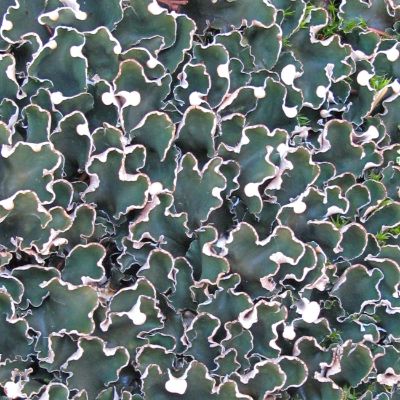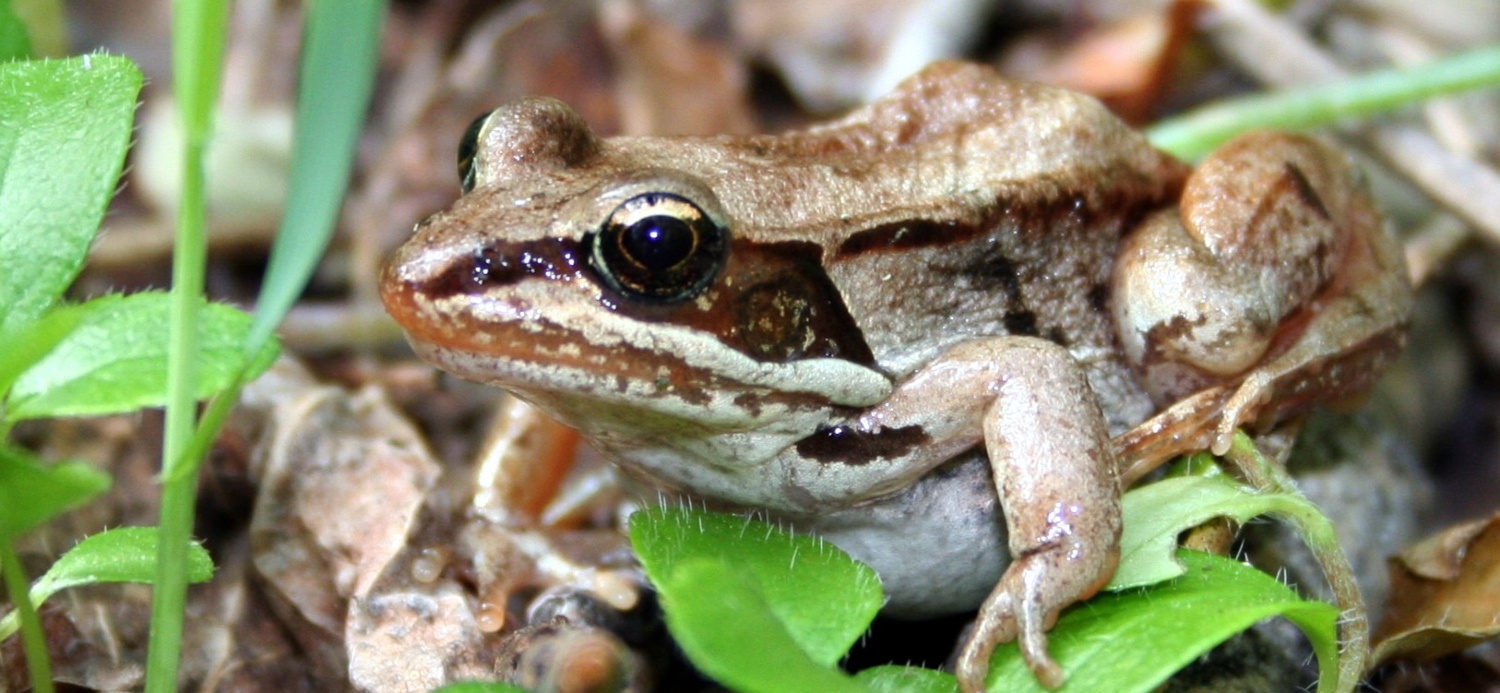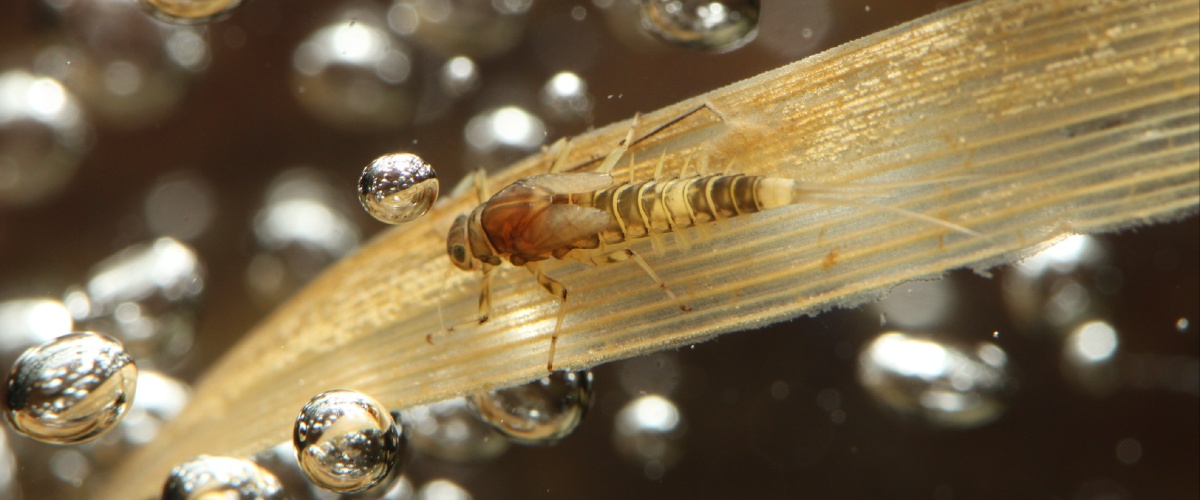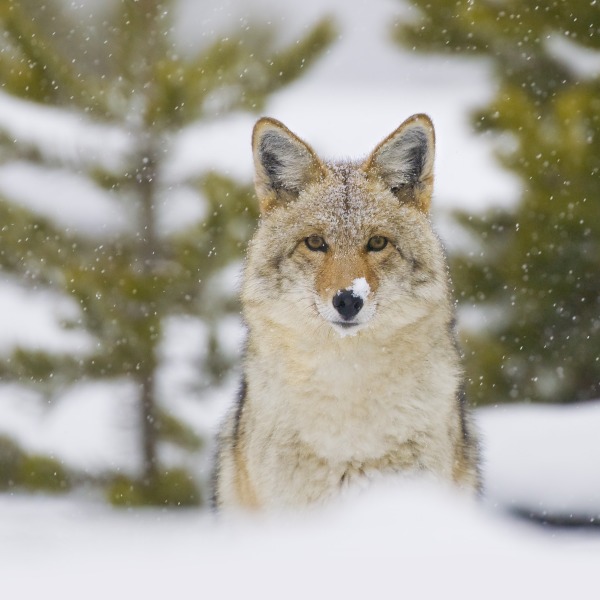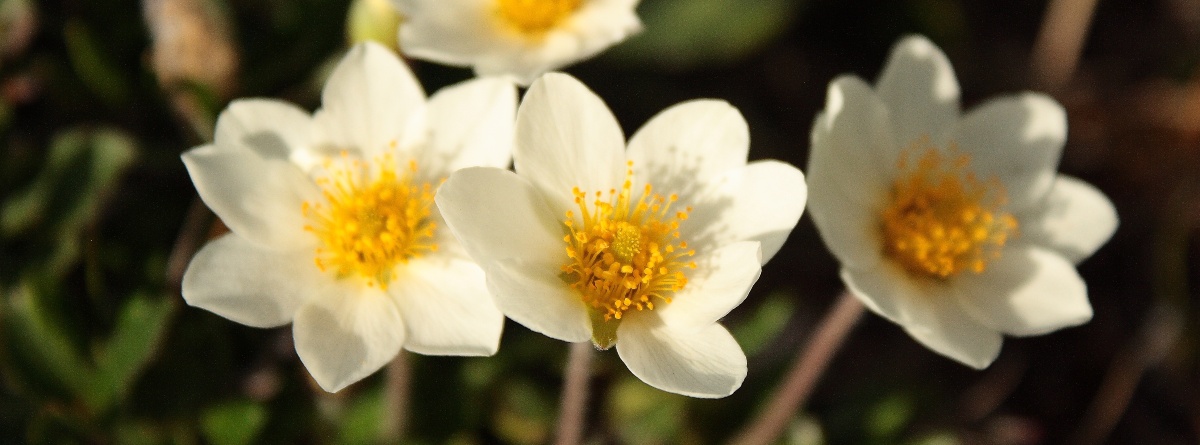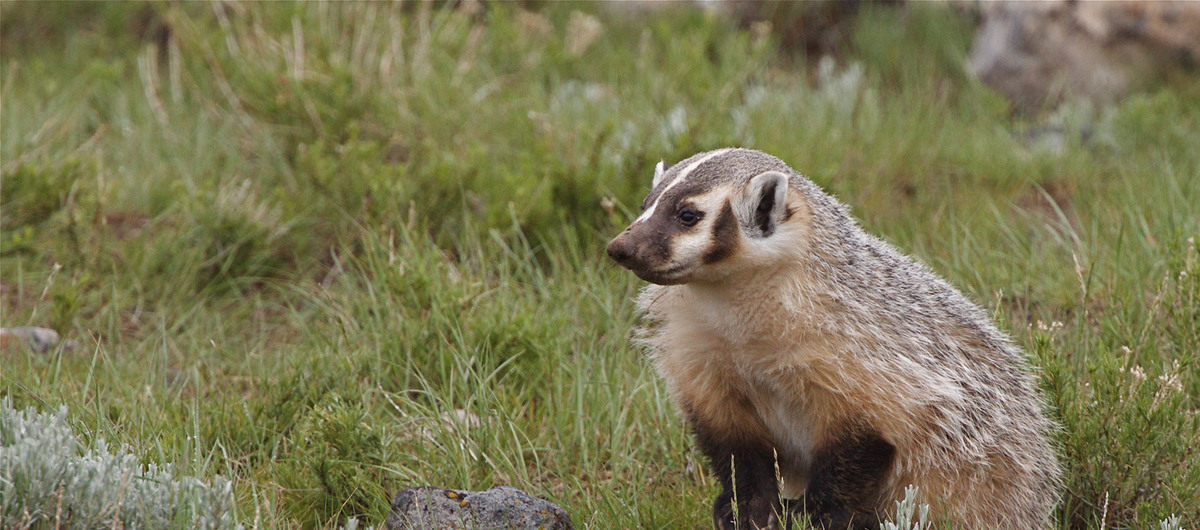
Lichens
We work hard to collect robust data on a variety of lichens from across the province. This work starts with training field staff to collect specimens from different substrates or strata, including trees, logs, soil, wetlands, and rocks. The field collections from each site are sorted and identified in the lab. Every one of the ABMI's lichen records after 2007 has a specimen supporting it, still associated with the substrate or stratum where it was collected. To turn collections into data on species diversity and relative abundance, our scientists identify 10,000–20,000 specimens per year. We use morphology, chemistry, and in some cases genetics to provide each specimen the most accurate name we can. We also consult and collaborate with experts across North America to validate and improve our taxonomy.
We are involved in a variety of scientific projects, including describing new species to science, developing new biomonitoring methods, and asking large-scale ecological questions alongside other researchers. We welcome graduate students, volunteers, and interns to the lab. Recent student projects at the University of Alberta with our lichen lab include:
- Megan Lewis, MSc: Biological soil crusts in Alberta’s grasslands: increasing our knowledge of their taxonomy, diversity, and sensitivity to drought and defoliation
- Sarah Ficko, Ph.D: Propagation and establishment of shrubs and lichen-dominated biocrusts for reclamation of disturbances in northern environments
The ABMI monitors a subset of Alberta’s lichens, namely the relatively large macrolichens, and tiny stubble lichens and allied fungi. Learn more about them in the ABMI's Biodiversity Browser and access our monitoring data and analysis.
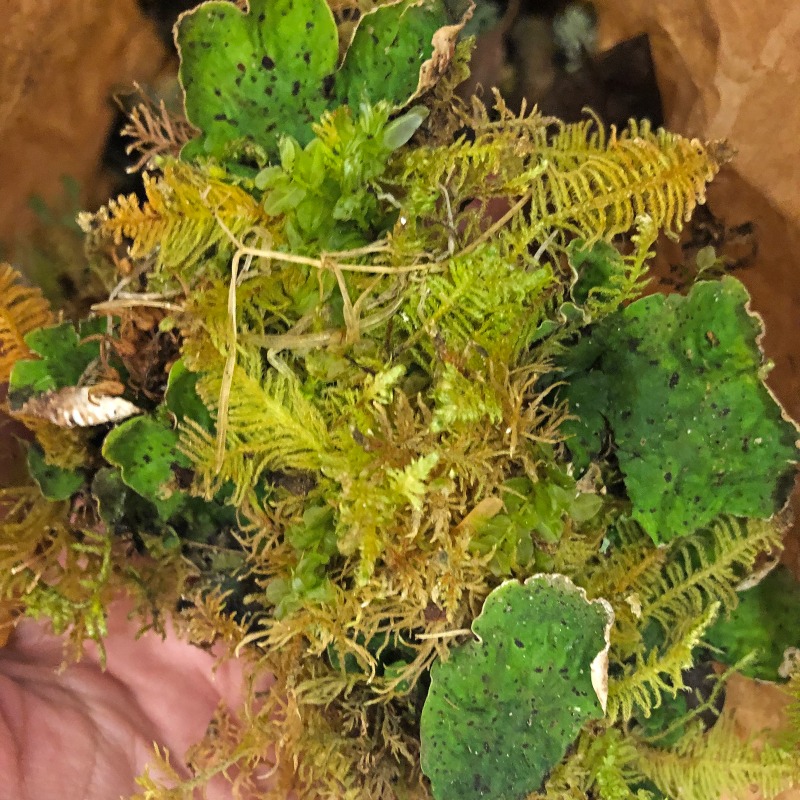
The ABMI has data on over 450 species of lichens and allied fungi.
Lichens are unions of at least two separate species, together forming a new, resilient organism. At a minimum, lichens are composed of a fungal partner and a photosynthetic partner—a green alga or a cyanobacteria—called a “photobiont.”
Change is in the Air
Lichens are sensitive to their environment and are one of the first taxa to be affected by changes in climate or habitat, making them a great candidate for monitoring. For instance, there are long-running air quality monitoring programs using lichens!

- Like all other sciences, taxonomy is evidence-based. Each scientific name is a hypothesis we adopt and test until evidence suggests a new hypothesis. The taxonomy of lichens is actively being investigated, with many names and species concepts shifting. We try to adopt new nomenclature gradually to allow names to stabilize and to minimize alienating users of the data.
- Evidence used to identify collections includes morphology, chemistry, anatomy, and in limited cases, genetics.
- The team identifies the majority of macrolichens, calicioid lichens, and allied calicioid fungi, including the fruticose (bush-like) or foliose (leaf-like) lichens. Barring a few species, most crustose lichens are not sampled or identified; they typically are more difficult to sample for field staff and require destructive sampling of the substrate.
- Some groups require more taxonomic work before names can confidently be assigned. In our dataset this includes the family Verrucariaceae, the family Pannariaceae, and the genus Stereocaulon.
- Other groups are under active investigation and identifications are expected to change in the near future. This includes the genus Peltigera, the focus of a large-scale sequencing project with Duke University.
- During species identification, we refer to published, primary literature for taxonomic accuracy. However, certain taxa are in dire need of updated taxonomic keys or revisions. Where possible, we use the specimens in our reference collections to develop regional, in-house keys to species.
- Draft keys for Alberta are available from taxonomists upon request, as well as more information on the species concepts, and other taxonomic resources.

Lichen walk

Field training
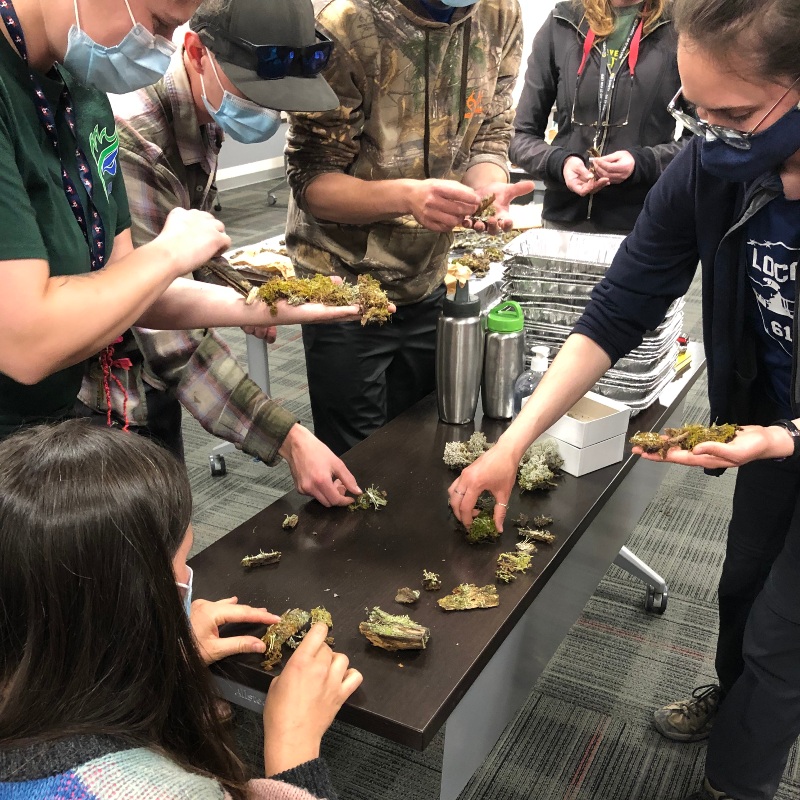
Classroom training
Species Discoveries
A list of our new records for Alberta/Canada/science. Click on a species for further information in our Biodiversity Browser.
Workflow - Life of a Collection
- May–June Field Collection
Technicians are trained to sample unique morphotypes across five, broad substrate types (trees, logs, rocks, soil and wetlands). They spend up to 35 minutes in each of four 25x15 m plots collecting lichens for identification in the lab. Those samples are sent to the taxonomy teams for drying and later sorting and identification. - August Bulk Sorting
-- Sorting - separating recognizable individual species
-- Drying - August–December Identification Round 1
-- Morphology and chemical spot tests – using a microscope, dichotomous keys
-- Focus on common species that are relatively quick to identify
-- Often done by summer technicians as well as the lichen team, with extensive quality control - September–March Identification Round 2
-- Conducted by the lichen team, with final quality control by the Lead Taxonomist
-- Focused on more difficult species or species that require more laborious methods for identification
-- May include chemical analyses such as thin-layer chromatography, sectioning and slide mounting for compound microscopy, staining, DNA barcoding, phylogenetic analyses, or external expert loans and verification
-- A small percentage (<5%) of material each year cannot be identified with acceptable certainty and is put aside for future, focused study - August–March Processing
-- Enter information/collection into a database
-- Create annotation labels - August–March Packaging and curation
-- Mounting
-- Envelopes - After March – Data becomes publicly available
-- Data provided through the ABMI website
-- Data used in habitat models and to understand how biodiversity is affected by human activities.
During the identification phase, we may seek out the expertise of external experts. This is because the species is new to science or the phenotype is outside of the known range for the species. We will also use Thin Layer Chromatography (a tool that identifies the chemical constituents of a sample) or DNA barcoding (a tool that looks at the genetic material for testing) to augment our identifications.
Here is a link to more information on our identification and quality control process.
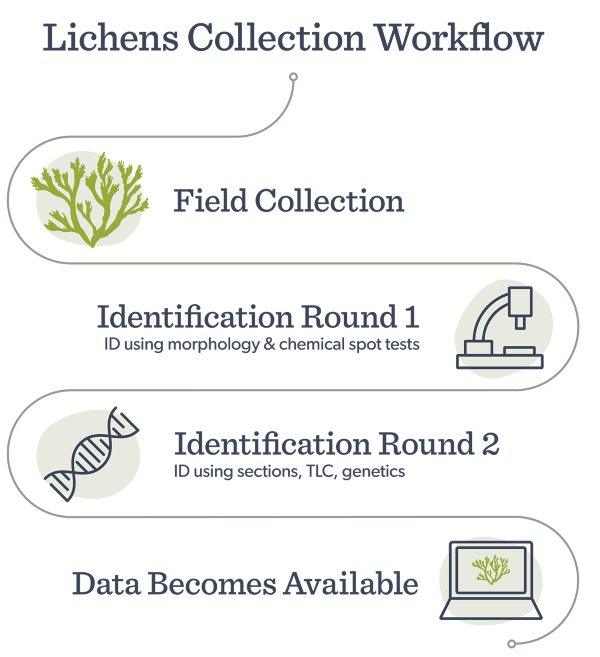
The Edmonton Lichen Biomonitoring project works to create a lichen-based citizen science biomonitoring tool for Edmonton in order to learn more about the city’s air quality.
The Peltigera project aims to expand our understanding of Peltigera lichen diversity in Alberta through genetic markers. Building on the research done by global Peltigera experts, we hope to use genetic data to both verify our identifications and detect new species to the province.
The RECCAP project—Retrospective Evaluation of Contaminants in Cryptogams in the Alberta Oil Sands Region Partnership—is exploring the use of ABMI data and specimens to determine environmental contaminant levels and their effects.

